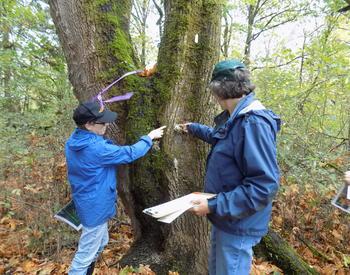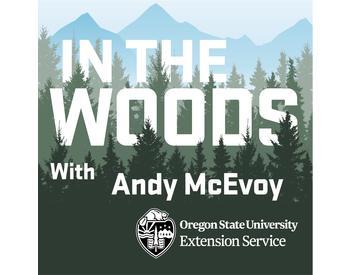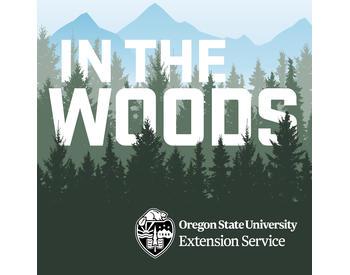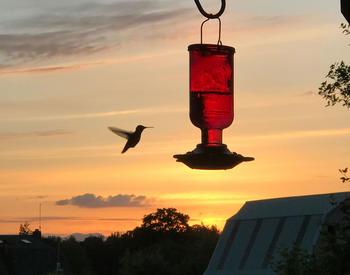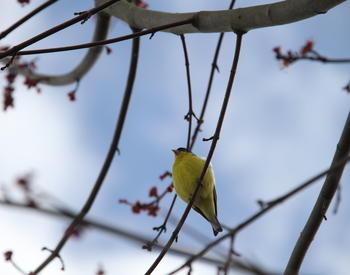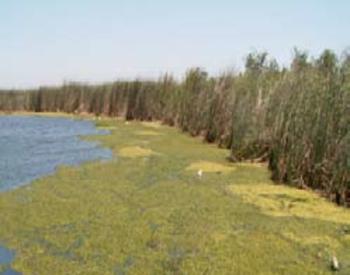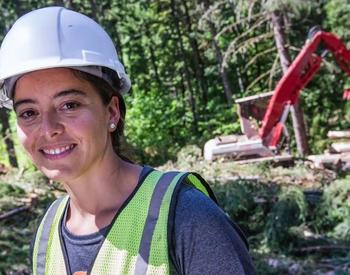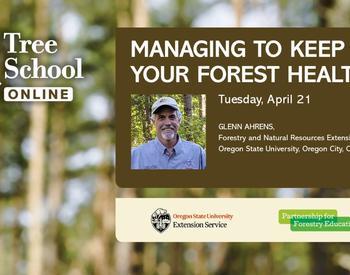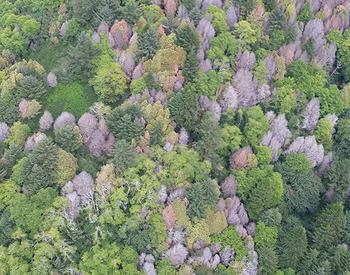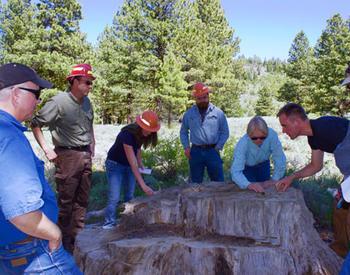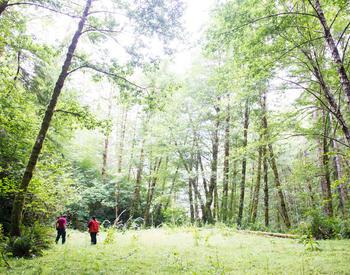What makes salmon unique?
Oregon is home to many wonders, including one that swims upstream. Coho salmon are one of seven salmon species native to the Pacific Ocean, all of which share an incredibly unique lifecycle. Salmon are anadromous, meaning they spend part of their lives in saltwater and part in freshwater. During the fall, coho salmon will fight tooth and nail – or rather, gill and fin – to make their way back upstream from the ocean to their natal hatching grounds. Here, the salmon will reproduce before dying as their lifecycle comes to completion.
Let’s rewind to the start of life for a coho. Female coho salmon build their nests, known as redds, in freshwater streams and rivers in mid-to-late fall. They rely on small, relatively low-gradient tributary streams with pea to orange-sized gravel and complex in-stream structures for spawning and juvenile rearing. Depending upon stream temperature, fertilized eggs will incubate for just six to seven weeks before hatching.
After the female coho – or hen – spawns, she will tend her redd (or redds) for a couple of weeks before dying, periodically moving her body, while on her side, in an undulating fashion to oxygenate her eggs and warding off other hens that may want to build on top of her redd. Like other fish species, the young coho doesn’t have parental care. Instead, they will reside in the gravel of streams until their built-in nutrient source is absorbed and they begin feeding on surrounding plankton and insects. Young coho salmon will spend about nine to 16 months in these freshwater ecosystems before migrating to the Pacific Ocean for their next phase of life.
In the ocean, coho salmon will feed and grow in their new saltwater environments for around 18 months adding over 95% of their adult body weight and swimming as far as southeast Alaska in search of food. Stocking up on fats and nutrients is important, as they will stop eating upon re-entering freshwater for migration. Migration takes quite the toll, as the salmon swim upstream on their journey back to their natal hatching grounds, some swimming hundreds of miles to where it all began to spawn, die, and begin the cycle again for their offspring. The decomposition of adult salmon brings an influx of nutrients for salmon fry, other fish species, insects and plants.
Supporting coho salmon in Oregon rivers and streams
Historically, salmon populations were higher than they are today due to a variety of factors, from overharvesting to habitat degradation over the past 150 years. In Oregon, private forests account for about one-third of all forestlands in the state, and about 43% of that fraction is owned by small forestland owners. This creates an opportunity for landowners to make a difference for our salmonids and other native fishes. A local example is the Bugni Forest & Tree Farm in Estacada.
The Bugni family owns 101 acres of forestland, and about one mile of a medium to large Salmon-Steelhead-Bull Trout (SSBT) stream that flows through the middle of their property. The Bugnis have been involved with fish habitat restoration projects within the reach of the creek that flows through their property for over 10 years. They hired contractors to construct 24 engineered log jams in the creek – with trees donated by the Bugni family – and the family has placed over 150 tons of spawning gravels and over 200 boulders in their creek.
To keep the stream temperatures cool, the family has planted thousands of native trees (both conifers and hardwoods) and shrubs along the riparian corridor. This work was funded by various local and state grants and consulting assistance was provided by the Oregon Department of Fish & Wildlife (ODFW). The family also promotes beaver activity within their property by planting native cottonwoods, willows and other desirable tree species because of the many benefits beavers provide to the stream system such as enhanced coho fry-rearing habitat and water storage within the surrounding riparian area.
In 2016, David Bugni received a grant to replace twin, side-by-side culverts beneath a nearby county road that were a barrier to fish passage with a new concrete bridge. This bridge project opened over five miles of their creek to habitat accessible to the migrating salmon and steelhead that had not been available to them since the early 1960s.
Between 2016 and 2023 Bugni has received additional grants for fish habitat restoration work on their and nearby neighbor’s properties for more log jams and spawning gravels. The results have been rewarding as the coho salmon populations in their creek have rebounded significantly and the benefits to other wildlife such as amphibians, aquatic insects, mammals and birds have also been observed. Winter steelhead populations have not yet rebounded like the coho have so the family is presently working with ODFW to understand why.
This type of work is a passion for David Bugni and his family, and the reward is observing the coho and steelhead migrating upstream, spawning, and then watching over the course of the following year as their little coho fry grow to get ready to migrate to the ocean. Salmon are a keystone species in our environment, meaning that if they become extinct or their populations drastically decline, significant repercussions will result through the entire ecosystem. The Bugni family are doing all they can to keep that from happening.
Learn more
David Bugni completed the Master Woodland Manager training through Oregon State University Extension in 2021. One of the ways that David has since given back is through landowner education. Below you can learn more about David's restoration work on his property and beyond.
- Tree School Online: Healthy streams: a family’s journey toward fish habitat restoration
- YouTube: David Bugni's channel featuring videos of projects he has completed
- Journey Down the Clackamas conference recording: Community-based science in the Clackamas
- Journey Down the Clackamas conference recording: An introduction to stream restoration and protection practices for the landowner
- About the Master Woodland Manager program
